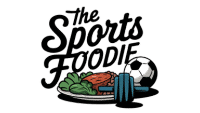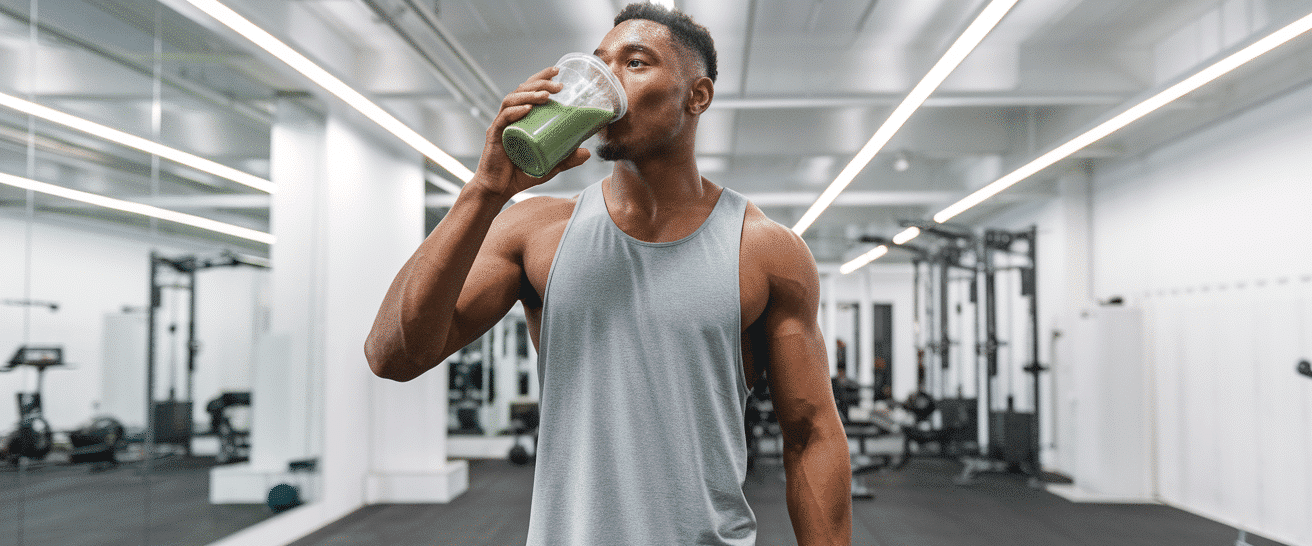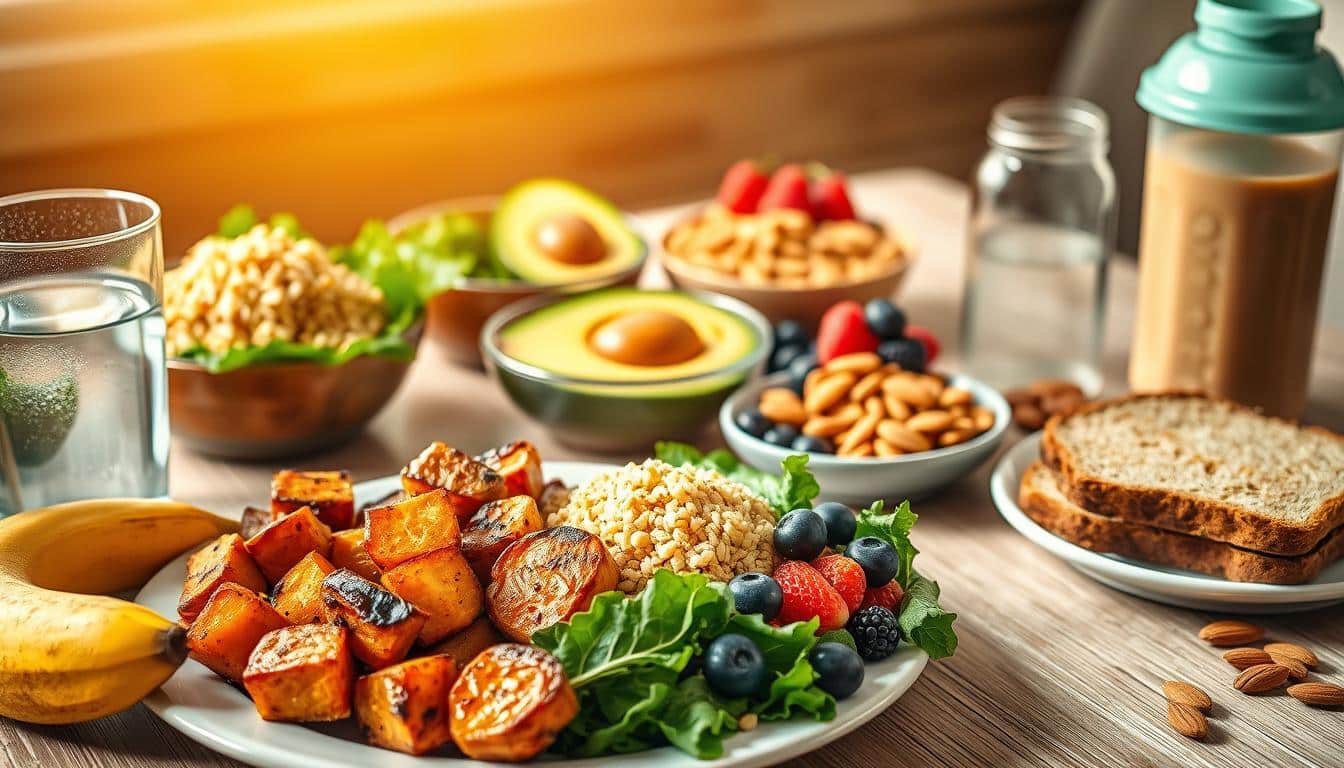Nearly 70% of an athlete’s race power comes from stored carbs and timely hydration. That one fact shows how much small choices shape speed and performance.
We keep this intro short and useful. You’ll see clear guidance on nutrition, energy, and recovery. Athletes need balanced macronutrients. A common split is about 60% carbohydrates, 20% protein, and 20% fat. This mix fuels intense training and aids muscle repair.
Pre-event eating should be simple. Eat half carbs and half lean protein plus produce three to four hours before a race. A light snack of simple carbs within thirty minutes can top off your stores. Avoid high fat, heavy fiber, or lactose if you are sensitive; they can cause GI trouble.
We’ll give a clear plan you can follow. Expect sample breakfast ideas like toast with eggs and fruit, lean chicken options, hydration tips with water, and timing by the minute. Follow these steps and your body will feel lighter, stronger, and ready to run.
Understand sprint nutrition and user goals
What you eat and when you eat shape short-distance speed and recovery. Good nutrition gives quick energy and supports muscle repair after intense exercise. Hit your targets, and you protect performance and lower injury risk.
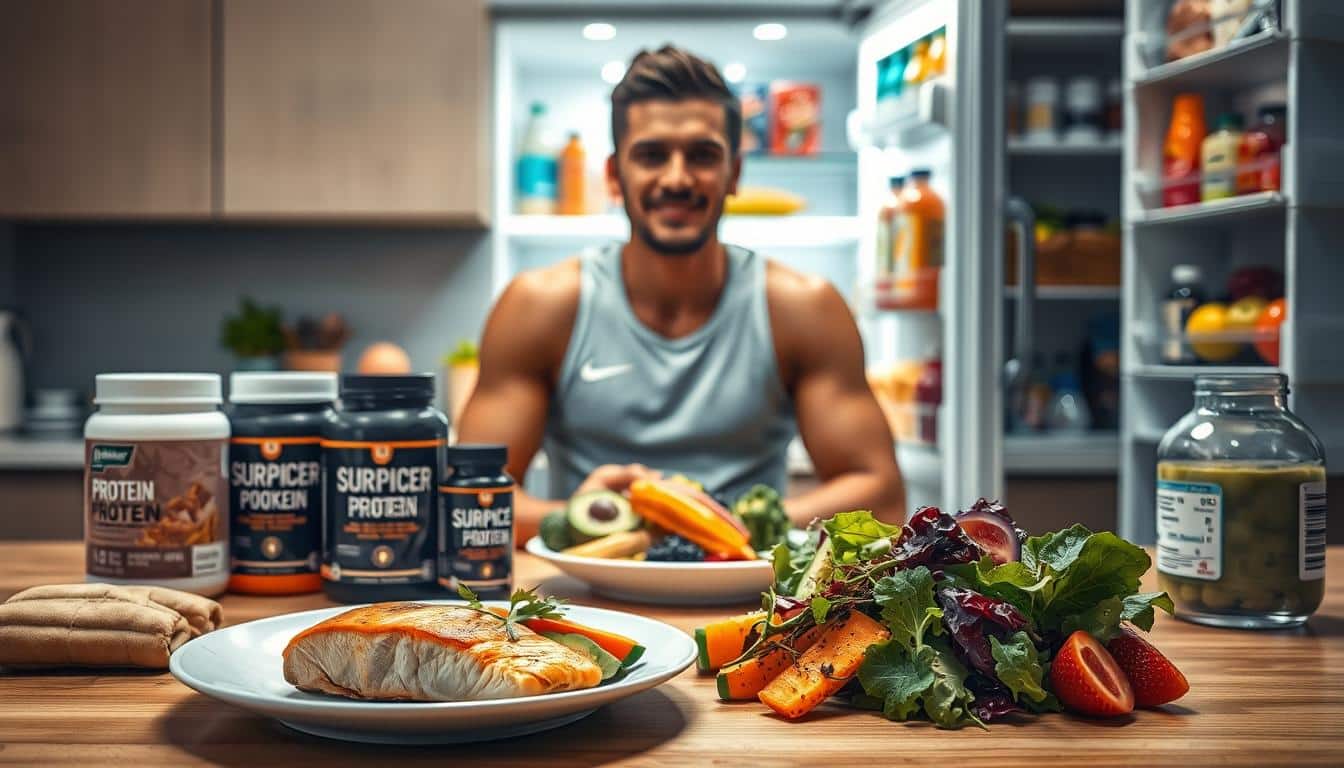
What sprinters need from food
Sprint work burns glycogen fast. You need carbs for quick energy and steady protein to rebuild muscle. Keep fats and high fiber low close to a start so your stomach stays calm.
How this guide helps you plan by time and intensity
Use clear timing: a balanced meal 3–4 hours before, then a small carb snack within 30 minutes if needed. Track minutes and hours around sessions to match intake to training load.
- Pick foods that sit well: toast and fruit at breakfast, a chicken bowl at lunch.
- Set goals like gain power or keep weight, then match calories and protein.
- Hydrate at set times so your body controls temp and feels steady during warm-up and race.
| Timing | What to eat | Why it helps |
|---|---|---|
| 3–4 hours pre | Balanced plate: carbs + lean protein + produce | Refills glycogen and stabilizes blood sugar |
| 30 minutes pre | Simple carbs: small fruit or rice snack | Quick energy and low GI upset |
| Post session (0–60 min) | Protein shake or chocolate milk + fruit | Speedy repair and glycogen resynthesis |
Set your macronutrient targets for sprint training
Set clear macronutrient targets so your body has the fuel it needs on hard days. Use ranges that match session intensity. These numbers give a simple base you can tweak.
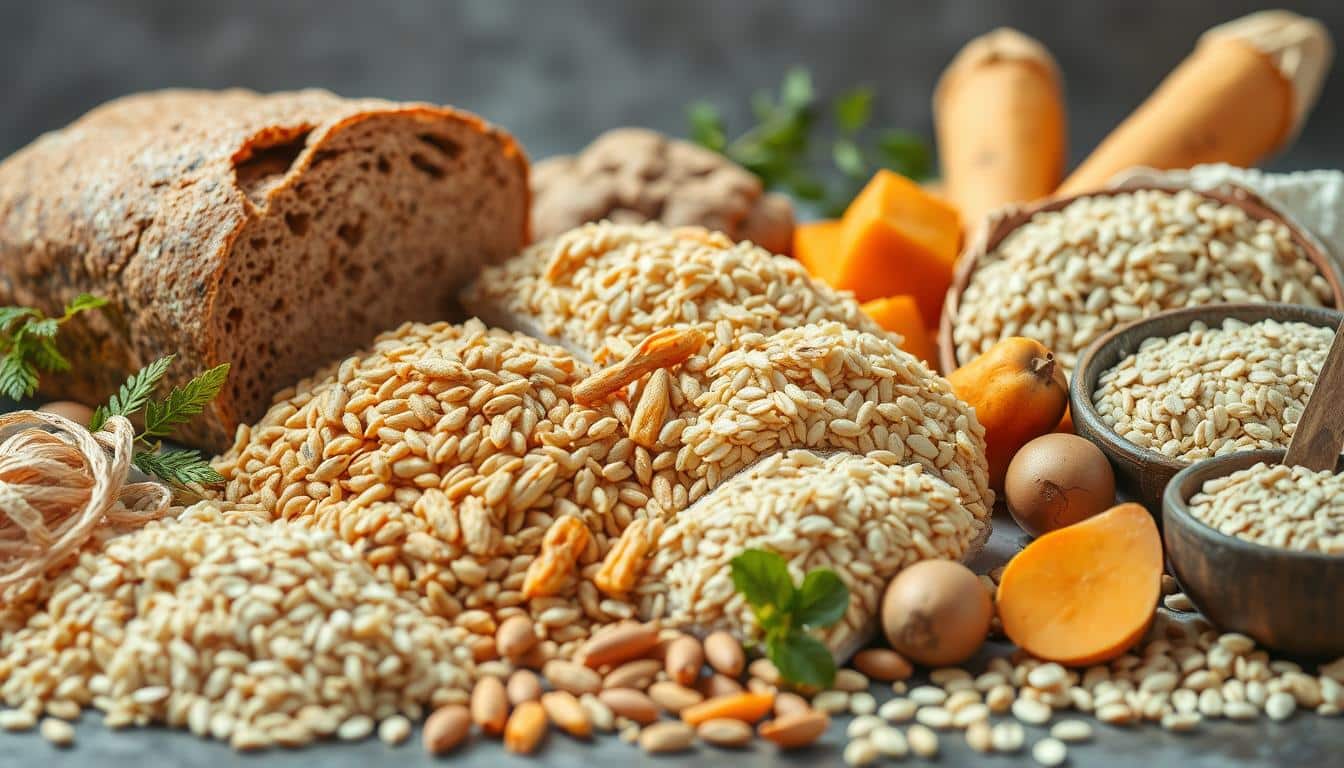
Carbohydrates to power high-intensity work and refill glycogen
Aim for 5–7 g per kg of body weight per day. Carbohydrates refill glycogen in muscles and the liver. Pick easy-to-digest carbs near efforts like rice, oats, potatoes, and fruit.
Protein to repair muscles and support strength gains
Target 1.4–2.0 g per kg per day. Spread protein across meals to support muscle repair. Choose lean sources such as chicken breast, fish, eggs, Greek yogurt, tofu, and beans.
Fats for energy balance and hormone support
Keep fat at 20–35% of total calories. At least 15–20% helps hormones and recovery. Use unsaturated fats from olive oil, avocado, nuts, and seeds.
Daily ranges and simple food picks
- Carbohydrates: 5–7 g/kg to fuel short, intense work and restore glycogen.
- Protein: 1.4–2.0 g/kg, split across meals to aid repair.
- Fat: 20–35% of calories to sustain energy and hormones.
- Quick options if a meal runs late: yogurt, a rice snack, or a small chicken wrap—ready in minutes.
| Macro | Range | Example foods |
|---|---|---|
| Carbohydrates | 5–7 g/kg/day | Rice, oats, fruit |
| Protein | 1.4–2.0 g/kg/day | Chicken, fish, beans |
| Fat | 20–35% calories | Olive oil, avocado, nuts |
Use this practical guide to match energy to training. Tweak the numbers by how you feel and how you perform. Keep meals regular and simple, and the rest of your sports nutrition will fall into place.
Time your meals around workouts and race day
Timing your food makes the difference between sluggish practice and a sharp session. Use clear windows so your energy lines up with effort and digestion stays calm.
Three to four hours before
Eat a balanced meal about three to four hours before a workout or race. Aim for roughly 50% carbohydrates, 25% lean protein, and 25% fruits and vegetables.
One to two hours before
If you have one to two hours, switch to easy carbohydrates and a small amount of protein. Choose items that sit light and digest quickly to avoid stomach upset during exercise.
Thirty minutes before
With only thirty minutes, top off energy with quick carbs like a granola bar or a crispy rice treat. Keep portions small so you don’t feel heavy when you start.
During efforts with breaks
During longer sessions with breaks, hydrate first. Add a tiny simple-carb snack—like applesauce—if you need a fast lift to hold performance.
Weigh-in days
On morning weigh-in days, shift the main meal closer to the 1–2 hours window and boost carbs. Then add fluids and a quick-carb option 30 minutes before activity.
- Quick checklist: 3–4 hours = balanced plate; 1–2 hours = easy carbs + light protein; 30 minutes = quick carb snack.
- Keep fruit, yogurt, or a small chicken wrap for earlier windows; use simpler options as time shortens.
- Use minutes-based checks to avoid late eating that upsets your stomach and harms performance.
| Timing | What to eat | Why it helps |
|---|---|---|
| 3–4 hours | 50% carbs, 25% protein, 25% produce | Digests, restores energy, steadies body |
| 1–2 hours | Easy carbs + light protein | Top-up energy without GI issues |
| 30 minutes | Quick carbs (granola bar, rice snack) | Fast energy in minutes before start |
Hydration plan for practice and meets
Good hydration is a simple edge that often decides how sharp you feel during practice and on race day. Follow clear timing so you maintain energy, avoid cramps, and support recovery.
Pre-hydrate in the hours before training
Drink about 500 ml (17 oz) roughly two hours before training or a race. This gives your body time to absorb fluids without feeling full.
Drink at regular intervals during exercise
Begin sipping early and keep a steady pace. Keep a bottle within reach so you don’t skip sips during short intervals or long sets.
Use electrolytes and carbs in longer or hotter sessions
For sessions over one hour or in heat, use a 4–8% carbohydrate beverage and include sodium at 0.5–0.7 g per liter. Aim for 30–60 g of carbohydrates per hour to protect energy during intense work.
Rehydrate after with water and sodium
After exercise, replace losses with water and sodium from food or sports drinks. Make sure urine trends pale straw by the next day — that’s a simple check that you replaced sweat losses.
- Quick checklist: 17 oz two hours pre; sip regularly during minutes of work; 4–8% carbs + 0.5–0.7 g/L sodium if over one hour.
- Choose cool fluids that taste good so you drink enough and sustain performance.
- Match this hydration to session length, weather, and your nutrition goals to avoid over- or under-drinking.
| Timing | What to drink | Why |
|---|---|---|
| ~2 hours pre | 500 ml water | Start hydrated without fullness |
| During (short) | Small sips of water every 10–20 minutes | Maintain blood volume and focus |
| During (long/heat) | 4–8% carb drink + 0.5–0.7 g/L sodium | Fuel energy and retain fluids |
Micronutrients that support speed, bones, and recovery
Beyond carbs and protein, vitamins and minerals keep your body firing at top speed. These small nutrients shape recovery, bone health, and muscle work. Below are clear roles and quick food sources you can add in minutes.
Iron: oxygen delivery and fatigue control
Iron helps carry oxygen in the body with hemoglobin. That steady delivery supports performance and cuts fatigue.
Find iron in lean meats, beans, and leafy greens. Add these to lunch bowls and dinner plates.
Calcium and magnesium: bones, muscle, and nerves
Calcium builds bone strength. Magnesium helps muscle relaxation and energy production.
Get calcium from dairy and fortified foods. Get magnesium from nuts, seeds, and greens—easy add-ons to any diet.
Vitamin D: bone health and muscle function
Vitamin D works with calcium to protect bones and keep muscle function strong. Sunlight helps, and so do fatty fish, fortified milk, and egg yolks.
B vitamins: energy production
B vitamins turn foods into usable energy and help red blood cell formation. They back up every sprint and every gym set.
Sources include whole grains, lean meats, legumes, fruits, and vegetables.
- Quick wins: add leafy greens at dinner and a dairy or fortified option at breakfast—takes minutes.
- Build these nutrients into your diet daily. Variety spreads vitamins minerals across the week and supports recovery.
- Track how you feel during training blocks and consider labs with your doctor if fatigue persists.
| Nutrient | Role | Top foods |
|---|---|---|
| Iron | Oxygen transport, reduces fatigue | Lean meat, legumes, leafy greens |
| Calcium & Magnesium | Bone strength, muscle relaxation | Dairy, fortified foods, nuts, seeds, greens |
| Vitamin D | Supports bones and muscle | Fatty fish, fortified milk, egg yolks, sunlight |
| B Vitamins | Energy production, RBC formation | Whole grains, lean meats, legumes, fruits |
Sample meal plan for sprinters
Here’s a simple daily outline you can follow to fuel training and speed work. It keeps choices clear and easy to prep so you spend less time cooking and more time training.
Breakfast
Toast with eggs and avocado, plus fruit and yogurt. This gives carbs, protein, and healthy fats to start the day.
Mid-morning snack
Greek yogurt with nuts or a rice cake. Small, quick, and protein-rich to carry you to lunch.
Lunch
Grilled chicken breast with brown rice or quinoa, broccoli tossed in olive oil. Balanced carbs and protein to support performance later.
Pre-practice snack
Banana with peanut butter or a granola bar. Eat this about 30–60 minutes before work to top off carbs without feeling heavy.
Post-practice
Chocolate milk or a protein shake with fruit. Fast carbs plus protein help repair muscle and restore glycogen in minutes after hard sessions.
Dinner
Salmon or chicken, sweet potato, and mixed vegetables. Focus on protein sources and colorful produce to aid recovery overnight.
Evening snack
Cottage cheese with pineapple or cereal with milk. Casein-rich options like cheese help steady protein delivery while you sleep.
- Hydration tip: sip water at each eating window to support digestion and fluid balance.
- Rotate rice and quinoa at lunch or dinner to vary texture and nutrients.
- Keep cheese in omelets or wraps to boost protein without extra prep.
| Time | Example | Why it helps |
|---|---|---|
| Breakfast | Toast, eggs, avocado, fruit, yogurt | Carbs + protein + fats for steady energy |
| Pre-practice | Banana + peanut butter / granola bar | Quick carbs that digest well before effort |
| Post-practice | Chocolate milk or protein shake + fruit | Fast recovery: carbs and protein in minutes |
Seven-day framework that matches training and rest days
Map out one simple week that matches hard training days with lighter recovery days. This keeps decisions easy and helps you hit targets without guessing.
Speed day
Raise carbs at breakfast and lunch. Pick toast with fruit in the morning to top off quick energy.
Have a small, simple pre-workout carb 30–60 minutes before hard intervals. After the session, eat lean protein to speed recovery.
Lift day
Keep steady carbs at each meal and add protein every time you eat. A lunch bowl with chicken breast, brown rice, and broccoli fits heavy strength work.
Use yogurt or a turkey wrap after lifting to refill and repair muscle without fuss.
Rest or recovery day
Aim for moderate carbs and more produce. Focus on protein-rich choices like chicken or fish at dinner and add extra vegetables.
Lower portions if training load is light. Slot yogurt once daily to hit protein targets and simplify tracking.
- Quick swaps: rice or potatoes at dinner on the toughest day to top off stores.
- Choose chicken or fish across dinners to keep protein high and fat moderate.
- Adjust portions up or down based on that day’s training and recovery needs.
| Day type | Key tweak | Simple example |
|---|---|---|
| Speed day | Higher carbs early | Toast + fruit; small rice snack pre; chicken after |
| Lift day | Steady carbs + protein | Chicken breast, brown rice, broccoli; yogurt post |
| Rest day | Moderate carbs, more produce | Fish or chicken dinner, extra vegetables, yogurt once |
Adjust meals for body weight, intensity, and food needs
Match what you eat to your day’s exertion and body size, and you’ll feel the difference.
Scale carbs with training volume and time of day. On high-intensity or high-volume days, raise carbohydrates by 20–30% versus light days. Use rice, potatoes, or oats at breakfast and lunch when sessions run long.
Meet protein needs while managing overall calories
Keep protein steady at about 1.6–2.0 g per kg body weight daily. Spread that across meals so repair happens all day.
If you’re a smaller athlete, trim fats and desserts first to drop calories while keeping carbs and protein intact. If you’re larger and cutting, keep protein high and lower carbs on very light days.
Pick foods you digest well; avoid heavy fat and high fiber pre-race
Avoid high-fat or high-fiber items within two hours of a hard session. If you’re lactose sensitive, skip dairy close to start time.
Need a quick top-up? Use a small simple-carb snack 30–60 minutes before. That gives fast energy without upsetting your stomach or adding much fat.
- Quick actions: track minutes from your last meal to sessions.
- Use chicken or fish for lean, protein-dense plates that aid recovery without excess fat.
- Hydrate on a schedule so energy and comfort stay steady during exercise.
| Situation | Action | Why |
|---|---|---|
| High-intensity day | +20–30% carbohydrates; rice or oats early | Refills glycogen for hard work |
| Light or rest day | Reduce carbs slightly; keep protein | Protect weight goals and muscle |
| 30–60 minutes pre | Small simple-carb snack | Fast energy, low GI risk |
Conclusion
Finish strong by using clear, easy-to-follow fueling rules. Set macro targets: carbs 5–7 g/kg, protein 1.4–2.0 g/kg, fats 20–35% of calories. Time intake at 3–4 hours, 1–2 hours, and 30 minutes before exercise.
Hydrate on a schedule with water early and add sodium in long or hot sessions. Include iron, calcium, magnesium, vitamin D, and B vitamins through varied foods like yogurt, greens, and broccoli.
Build a simple plan that matches heavy and light days. Keep chicken or fish and a starch ready. Track one to two small changes each week and review progress monthly.
Ready to start? See quick breakfast ideas high-energy breakfast ideas to kick your energy and recovery into gear.
